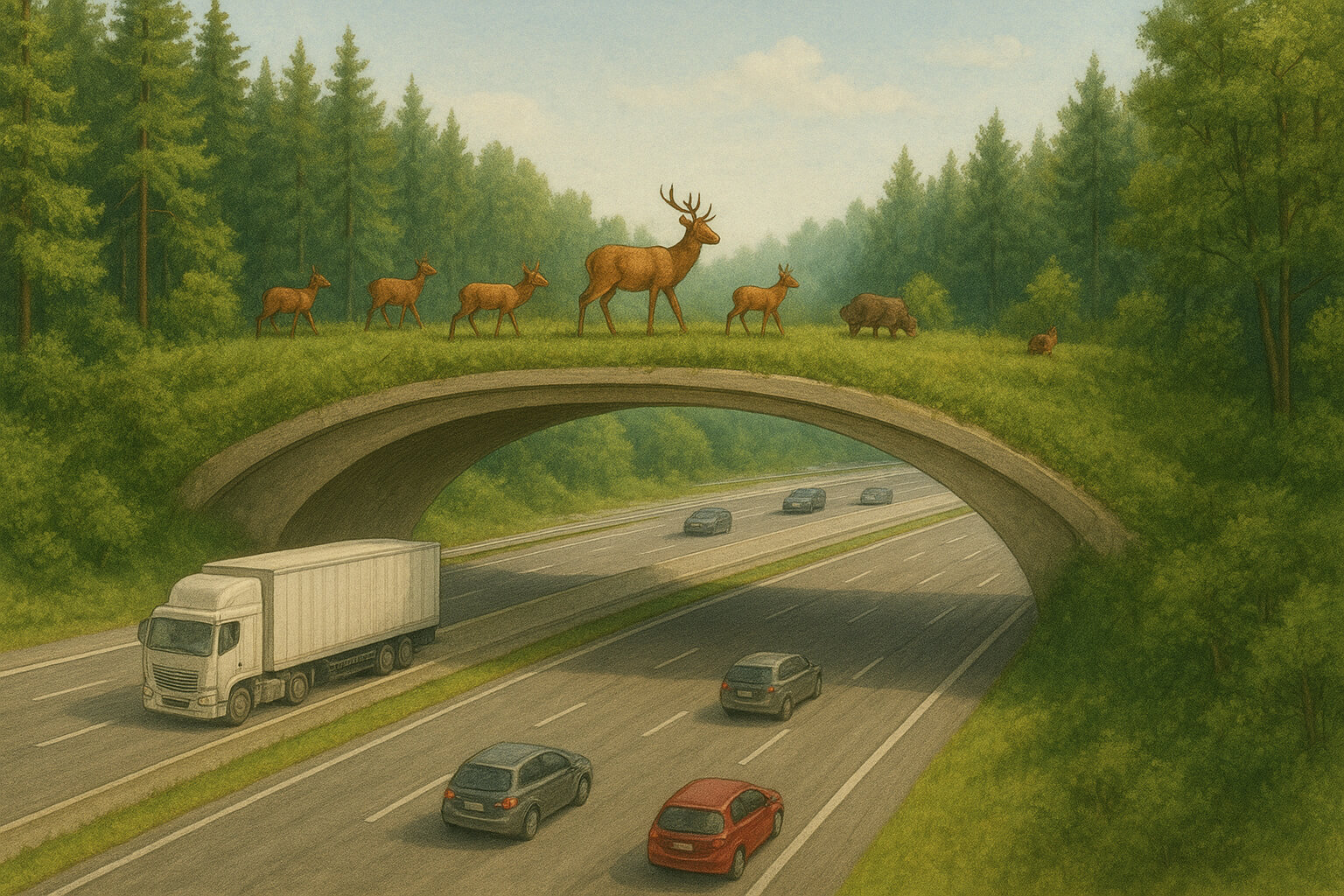As human development expands, natural habitats are increasingly fragmented by roads, cities, fences, and farmlands. This physical separation isolates wildlife populations, limiting their access to essential resources and threatening their long-term survival. Wildlife corridors are a crucial solution—designed to reconnect these fragmented landscapes and help protect biodiversity.
Without safe passages between habitats, animals face declining genetic diversity, increased road mortality, reduced access to mates and food, and greater difficulty adapting to climate change. The result? Many species are pushed closer to extinction.
Why Wildlife Corridors Matter
Wildlife corridors are not just conservation tools—they are vital lifelines for maintaining ecosystem health. Here's why they matter:
1. Habitat Connectivity
- Corridors allow wildlife to move safely between forests, wetlands, grasslands, and other critical habitats. For wide-ranging species like wolves, elephants, and mountain lions, this connectivity is essential for survival. According to National Geographic, these connections reduce habitat isolation and improve genetic diversity—two key factors in sustaining healthy animal populations.
2. Reducing Human-Wildlife Conflict
- When animals lose access to their natural territories, they often venture into urban or agricultural areas in search of food, water, or shelter—leading to vehicle collisions, crop damage, and even fatal encounters. Corridors provide safe detours around human settlements, reducing conflict and protecting both animals and people.
3. Adapting to Climate Change
- As climate zones shift, many species must migrate to cooler, wetter, or more stable environments to survive. Corridors enable these movements by linking existing habitats, giving animals the chance to relocate, reproduce, and establish new territories.
For a broader context on restoring nature, check out Understanding Ecosystem Restoration: Bringing Nature Back.
Types of Wildlife Corridors
Wildlife corridors come in many shapes and sizes, depending on the landscape and the species they support. These include:
1. Overpasses and Underpasses
- Wildlife bridges and tunnels are constructed across highways or railways, providing safe passage for animals like deer, bears, and cougars. These structures are increasingly common in places like the U.S., Canada, and the Netherlands.
2. River Corridors
- Natural waterways and riparian zones serve as travel routes for species like otters, amphibians, and birds, allowing them to move freely through a region while staying near water.
3. Forest Strips and Greenbelts
- In agricultural or suburban areas, narrow belts of trees, hedgerows, or vegetation help smaller animals—such as foxes, squirrels, and pollinators—move between isolated patches of forest or grassland.
4. Flyways for Birds
- For migratory birds, flyways serve as aerial corridors that span continents. These routes are crucial for rest, feeding, and breeding during seasonal migrations.
- This idea of supporting interconnected habitats also ties into Protecting Our Pollinators: Why Bees Matter, where local ecosystems depend on free movement and biodiversity.
Global Examples of Wildlife Corridors
Across the globe, wildlife corridors are proving to be game-changers in conservation:
Yellowstone to Yukon Initiative (North America)
- Spanning over 2,000 miles, this corridor connects Yellowstone National Park in the U.S. to the Yukon in Canada. It allows bears, elk, lynx, and wolves to move freely between seasonal habitats and reduces inbreeding risks in isolated populations.
Banff National Park Wildlife Crossings
- Banff has more than 40 wildlife underpasses and overpasses, reducing animal-vehicle collisions by over 80%. The structures are monitored with motion-activated cameras, revealing regular use by elk, bears, moose, and cougars.
India’s Tiger Corridors
- India’s tiger reserves are often surrounded by villages and farms. Specially protected corridors now link these reserves, allowing tigers and leopards to migrate safely—preserving genetic diversity and minimizing human conflict.
These real-world projects demonstrate the power of connectivity to protect wildlife and reduce threats from human activity.
How You Can Support Wildlife Corridors
Even if you’re not involved in conservation professionally, you can still make a difference:
1. Advocate for Policy Change
- Support legislation that protects open spaces, funds wildlife crossings, or designates conservation corridors. Your voice can influence local and national priorities.
2. Volunteer or Donate
3. Create Connectivity in Your Community
- If you live near natural areas, consider supporting wildlife through:
- Native gardens that attract pollinators and birds
- Wildlife-friendly fencing that allows small mammals to pass
- Safe zones for amphibians and reptiles
- Learn more in How to Create a Wildlife-Friendly Backyard.
4. Stay Informed and Spread Awareness
Final Thoughts: Reconnecting the Wild
Wildlife corridors are more than just clever infrastructure—they are symbols of coexistence. In a world where wild spaces are shrinking and the climate is changing rapidly, corridors give animals the freedom to move, the space to thrive, and the chance to survive.
By investing in these pathways—financially, politically, or in your own backyard—you’re helping rebuild the interconnected web of life that sustains not only wildlife but the health of our entire planet.
Recommended Reading & Resources
